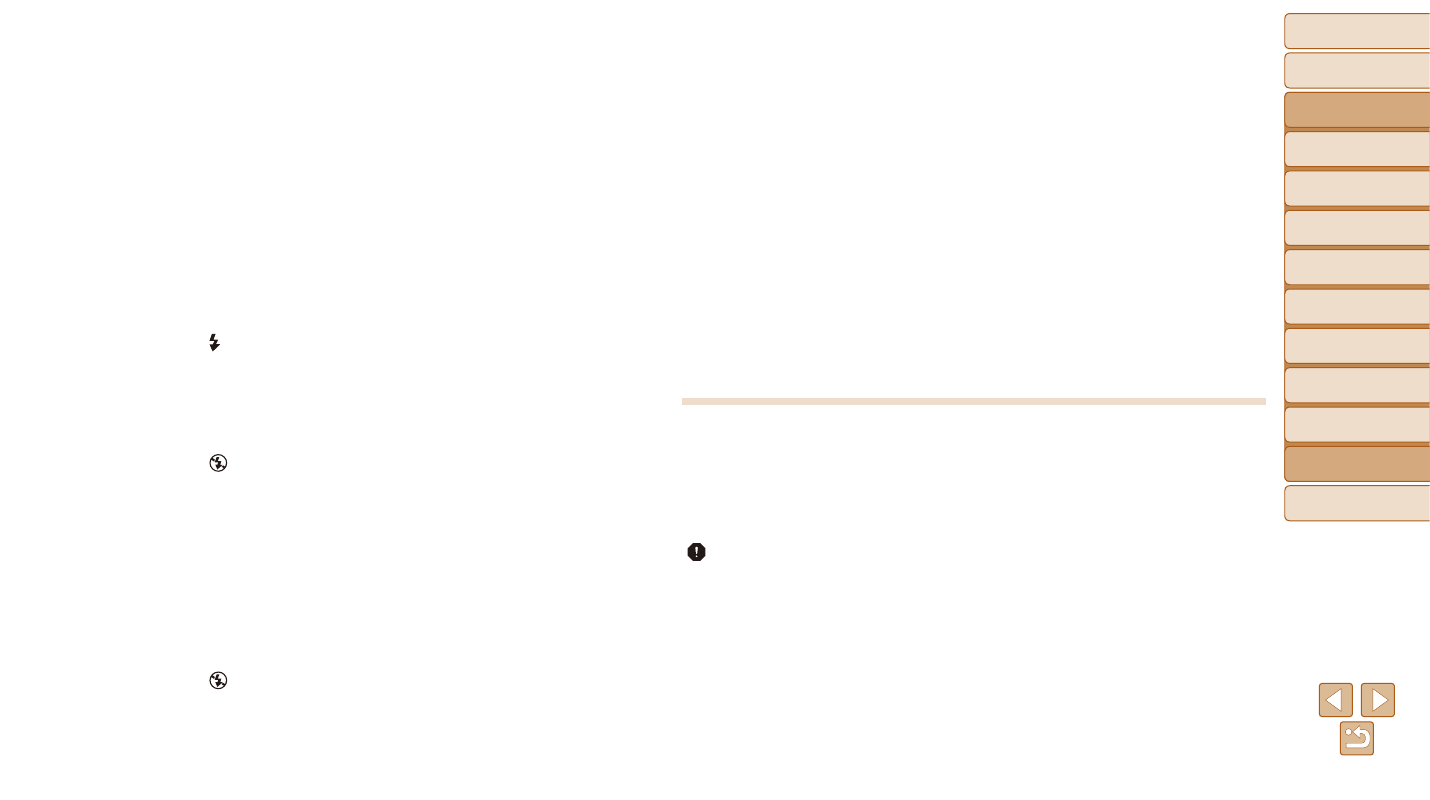Shooting movies – Canon IXUS 180 User Manual
Page 122

122
Before Use
Basic Guide
Advanced Guide
Camera Basics
Auto Mode
Other Shooting
Modes
P Mode
Playback Mode
Setting Menu
Wi-Fi Functions
Accessories
Appendix
Index
Shots are out of focus.
•
Press the shutter button halfway to focus on subjects before pressing it all the way
down to shoot (
•
Make sure subjects are within focusing range (
).
•
).
•
Confirm that unneeded functions such as macro are deactivated.
•
Try shooting with focus lock (
).
No AF frames are displayed and the camera does not focus when the
shutter button is pressed halfway.
•
To have AF frames displayed and the camera focus correctly, try composing the
shot with higher-contrast subject areas centered before you press the shutter button
halfway. Otherwise, try pressing the shutter button halfway repeatedly.
Subjects in shots look too dark.
•
Set the flash mode to [ ] (
).
•
Adjust brightness by using exposure compensation (
).
•
Adjust contrast by using i-Contrast (
).
•
).
Subjects look too bright, highlights are washed-out.
•
Set the flash mode to [ ] (
).
•
Adjust brightness by using exposure compensation (
).
•
).
•
Reduce the lighting on subjects.
Shots look too dark despite the flash firing (
•
Shoot within flash range (
•
).
Subjects in flash shots look too bright, highlights are washed-out.
•
Shoot within flash range (
•
Set the flash mode to [ ] (
).
White spots appear in flash shots.
•
This is caused by light from the flash reflecting off dust or airborne particles.
Shots look grainy.
•
Lower the ISO speed (
).
•
High ISO speeds in some shooting modes may cause grainy images (
Subjects are affected by red-eye.
•
) to light the red-eye reduction lamp (
) for
flash shots. Note that while the red-eye reduction lamp is lit (for about one second),
it is not possible to shoot, because the lamp is counteracting red-eye. For best
results, have subjects look at the red-eye reduction lamp. Also try increasing the
lighting in indoor scenes and shooting at closer range.
•
Edit images using red-eye correction (
).
Recording to the memory card takes too long, or continuous shooting
is slower.
•
Use the camera to perform low-level formatting of the memory card (
Shooting settings or FUNC. menu settings are not available.
•
Available setting items vary by shooting mode. Refer to “Functions Available in Each
Shooting Mode”, “FUNC. Menu”, and “Shooting Tab” (
Shooting Movies
The elapsed time shown is incorrect, or recording is interrupted.
•
Use the camera to format the memory card, or switch to a card that supports
high-speed recording. Note that even if the elapsed time display is incorrect,
the length of movies on the memory card corresponds to the actual recording time
,
[ ] is displayed and shooting stops automatically.
The camera’s internal memory buffer filled up as the camera could not record to the
memory card quickly enough. Try one of the following measures.
•
Use the camera to perform low-level formatting of the memory card (
•
Lower the image quality (
•
Switch to a memory card that supports high-speed recording (